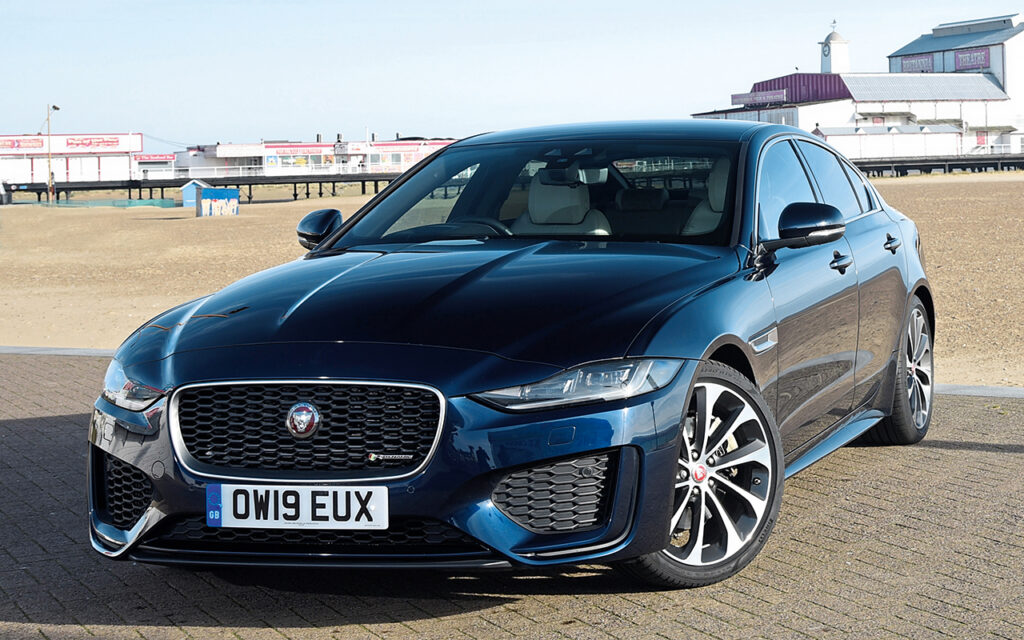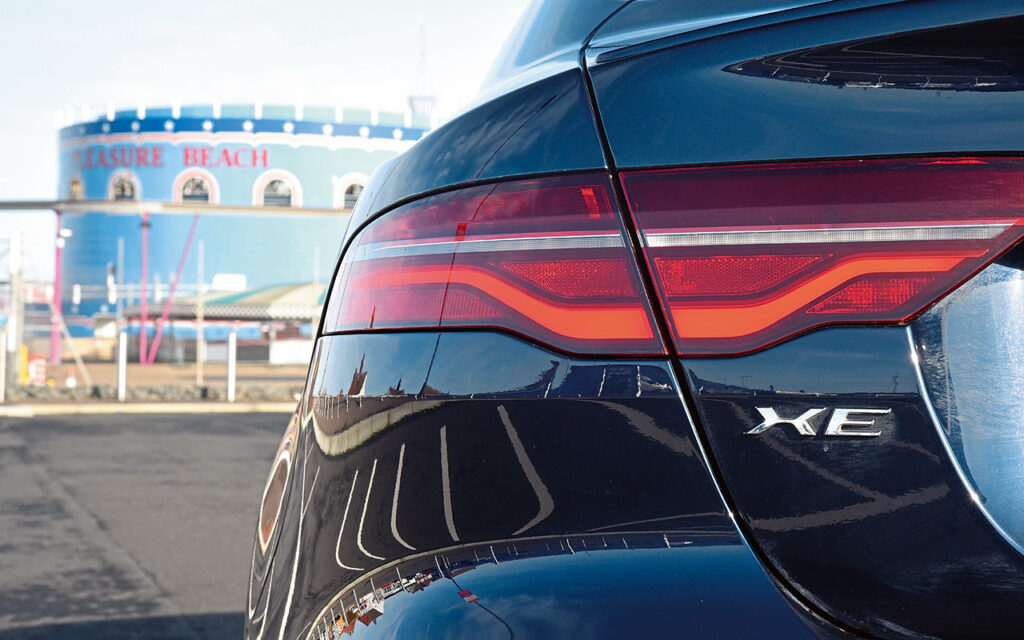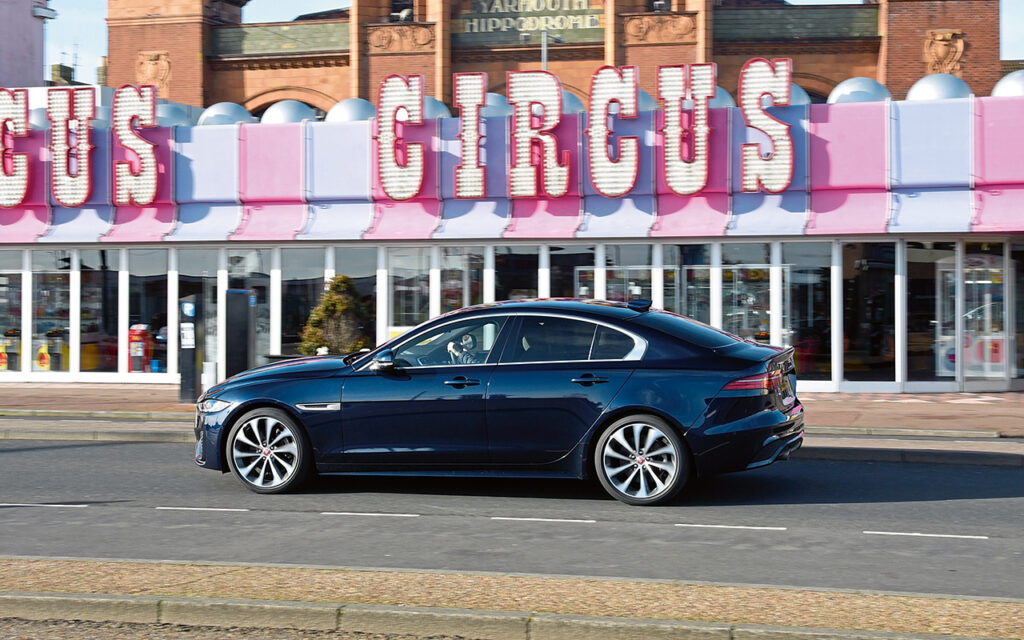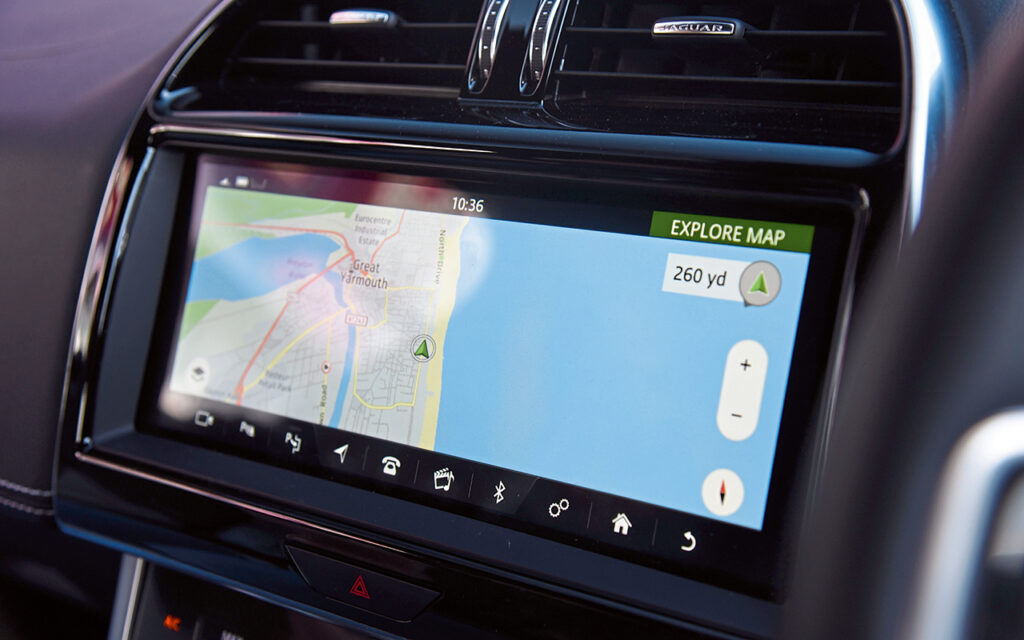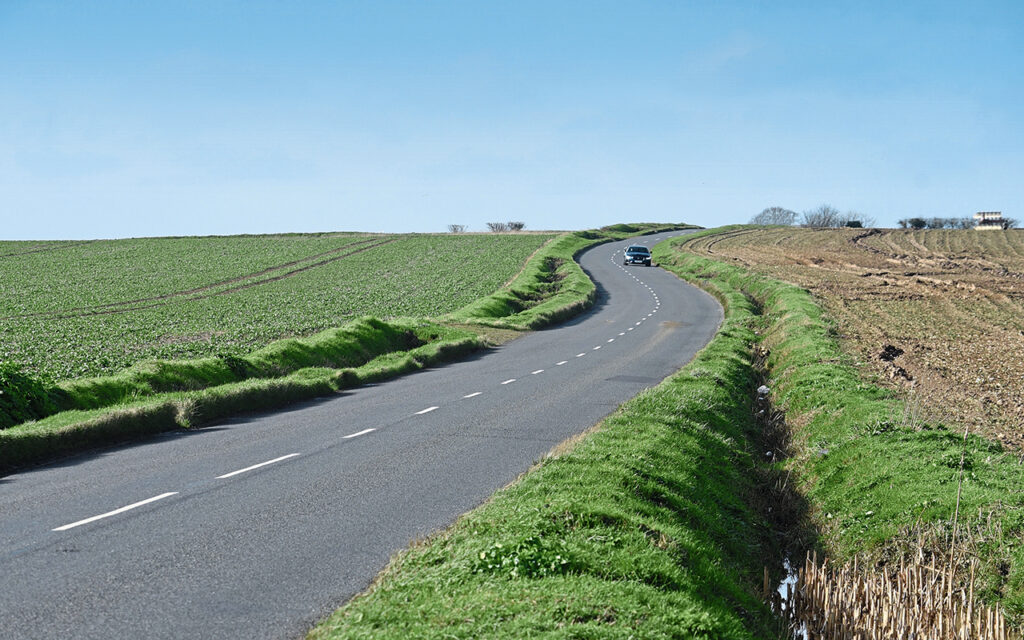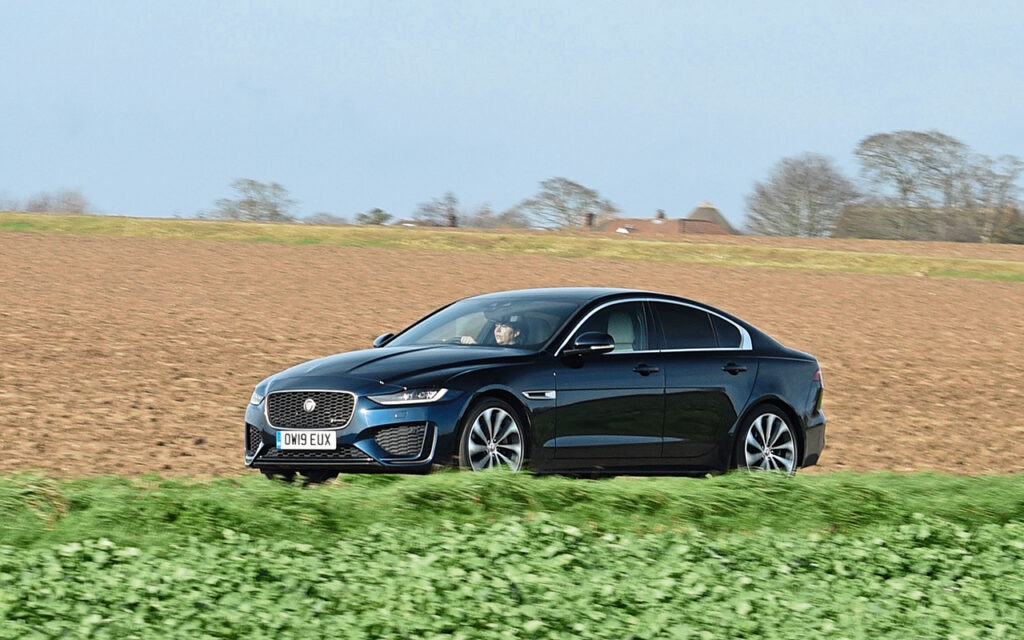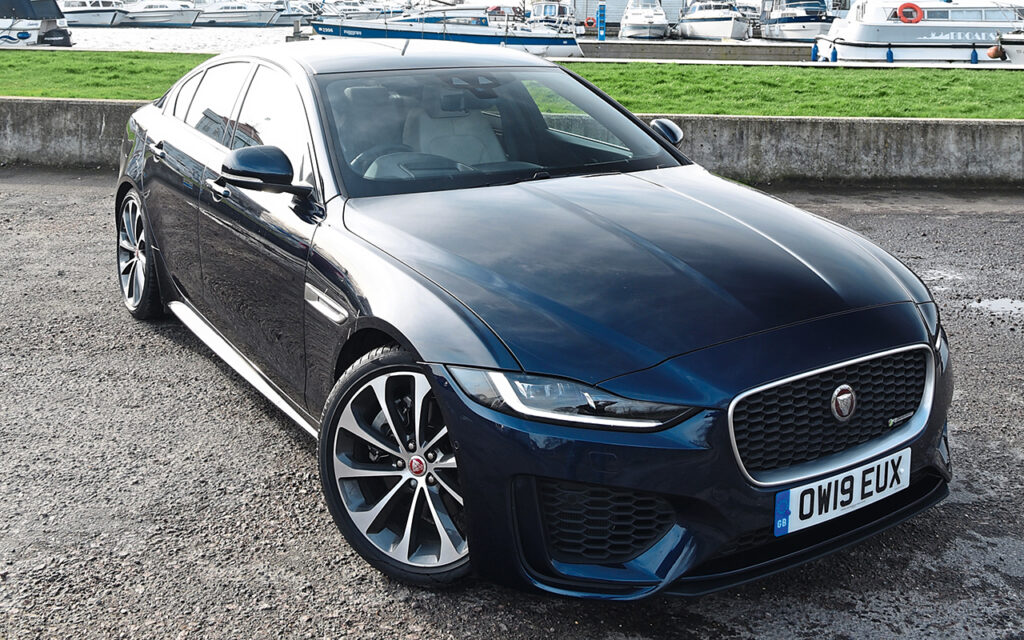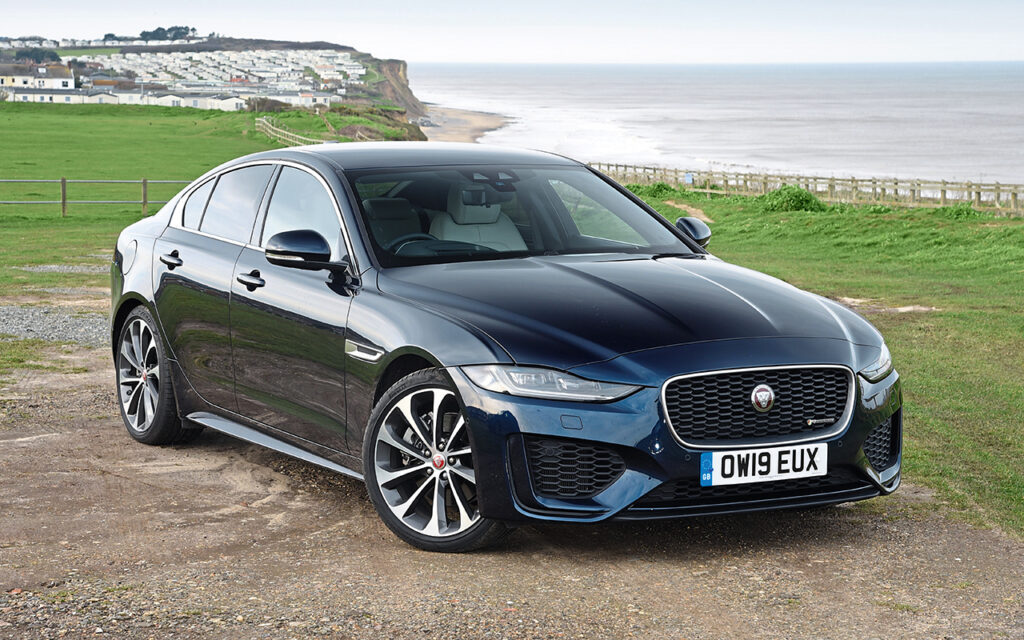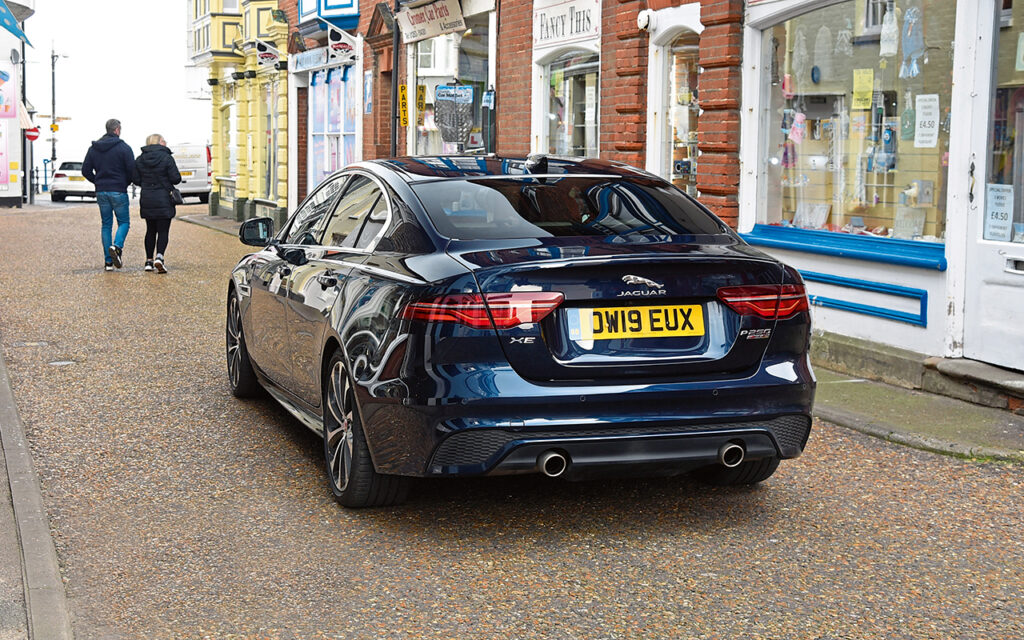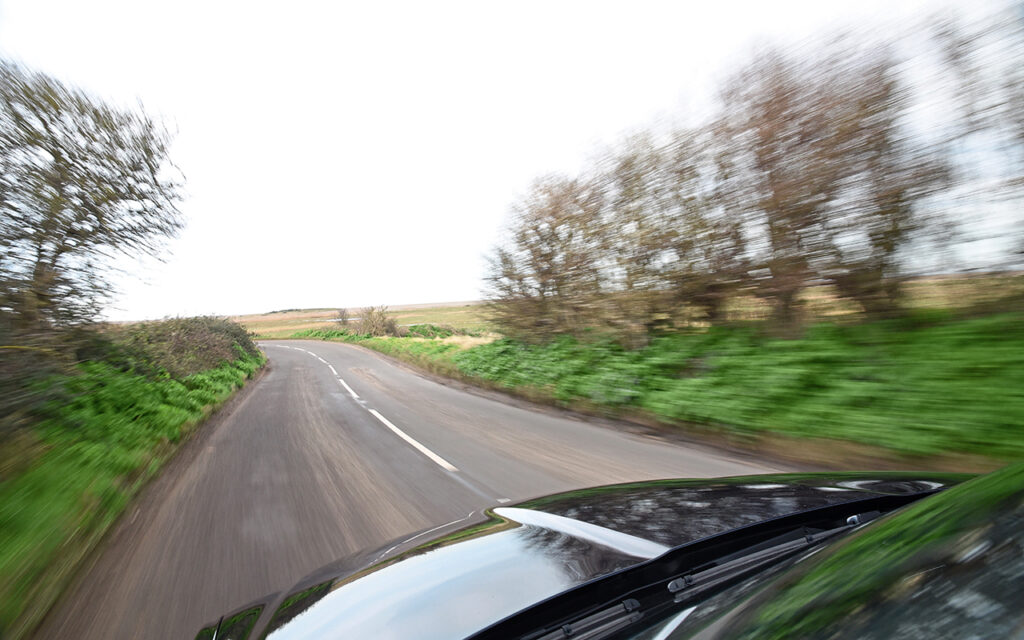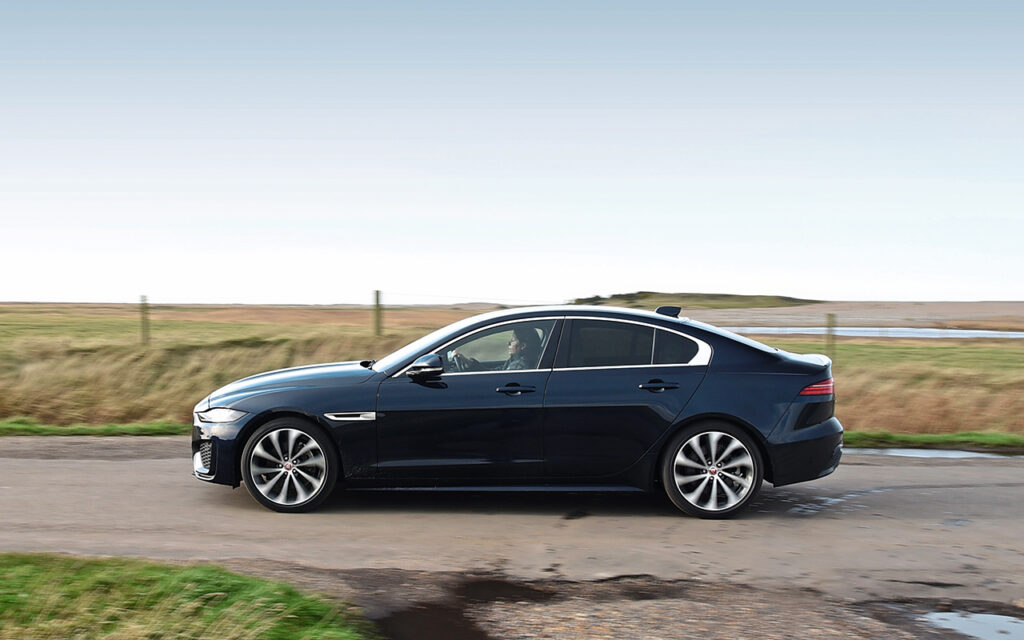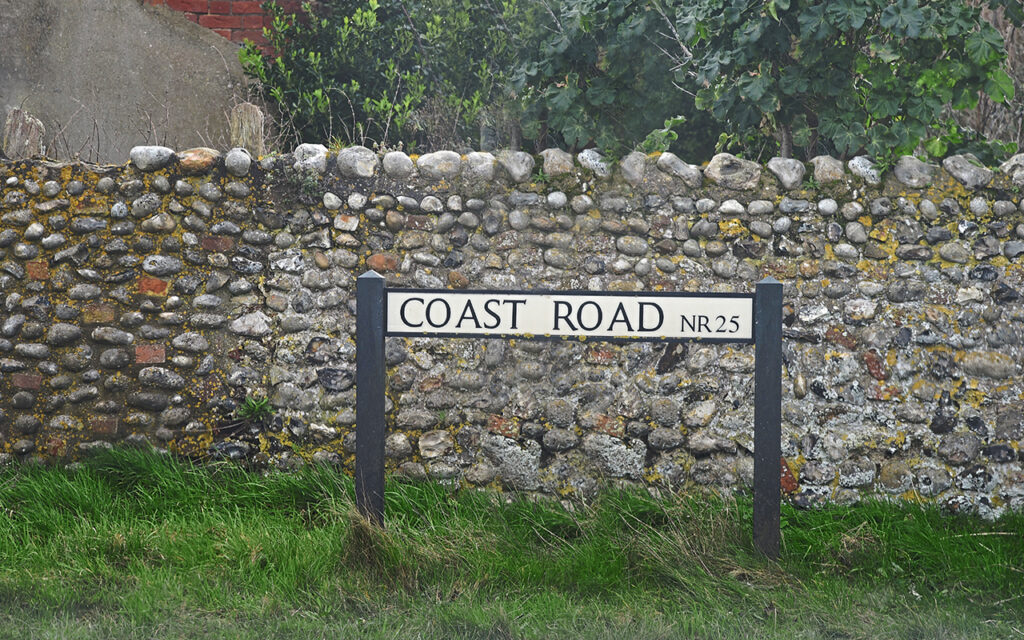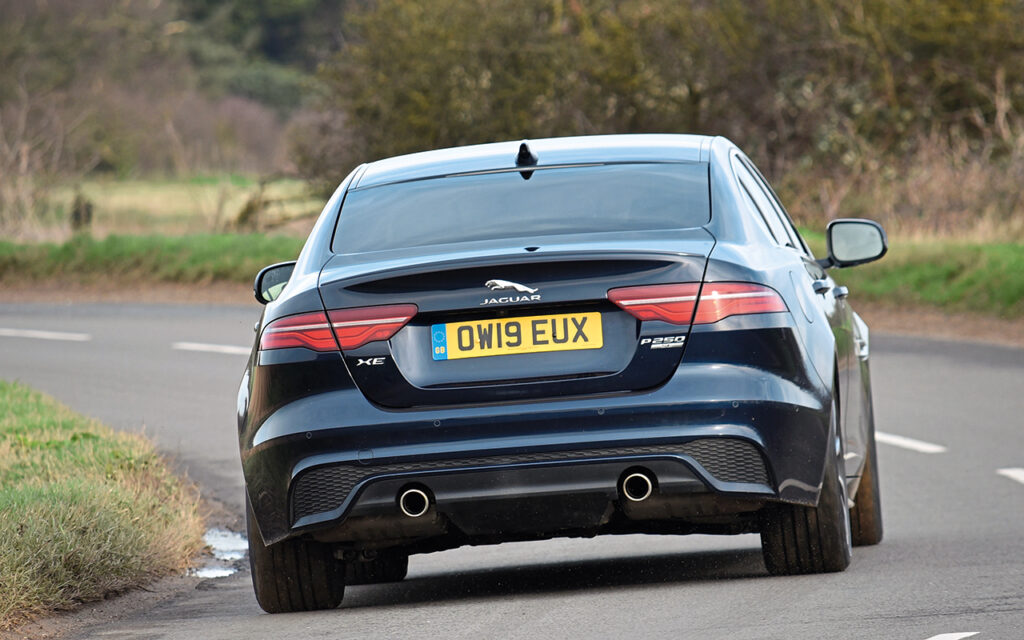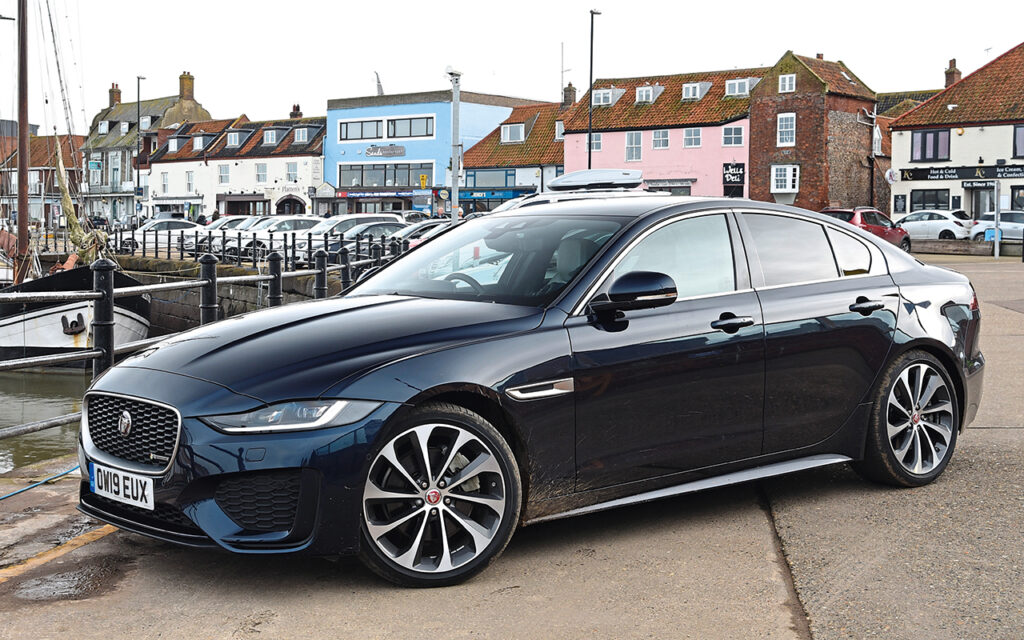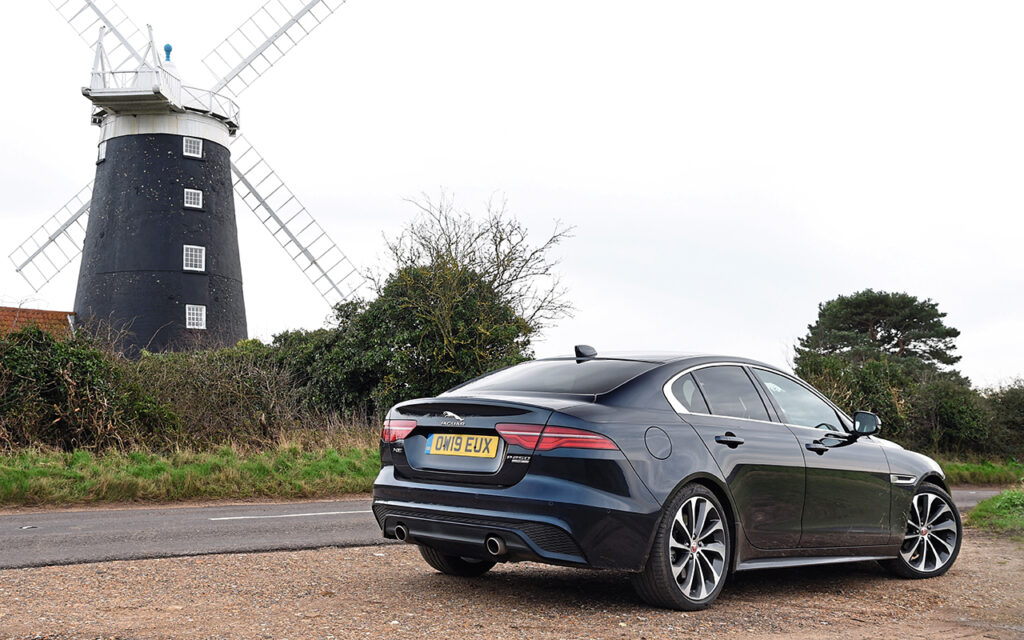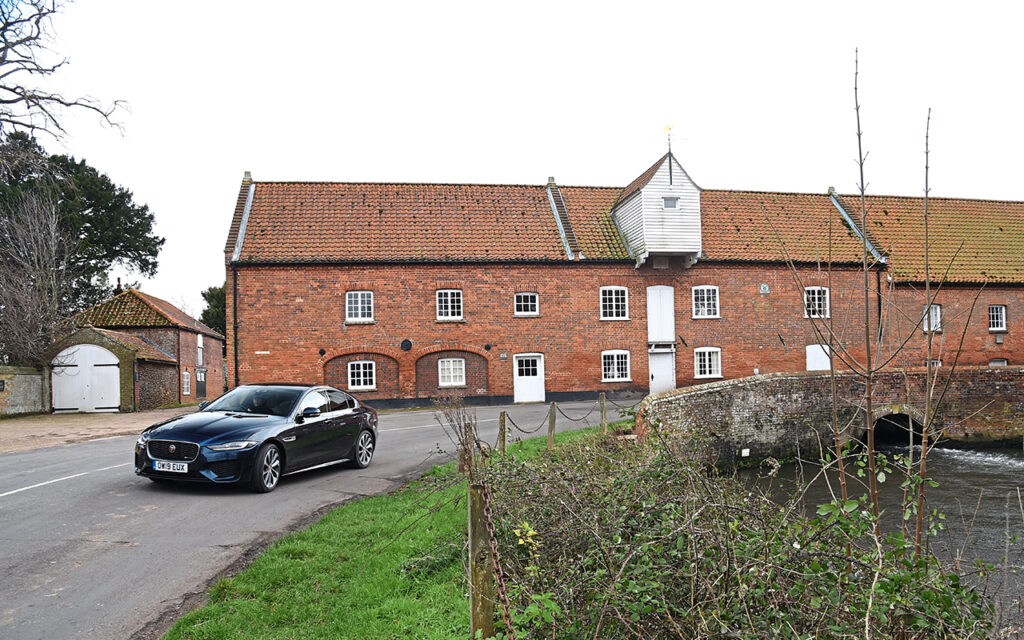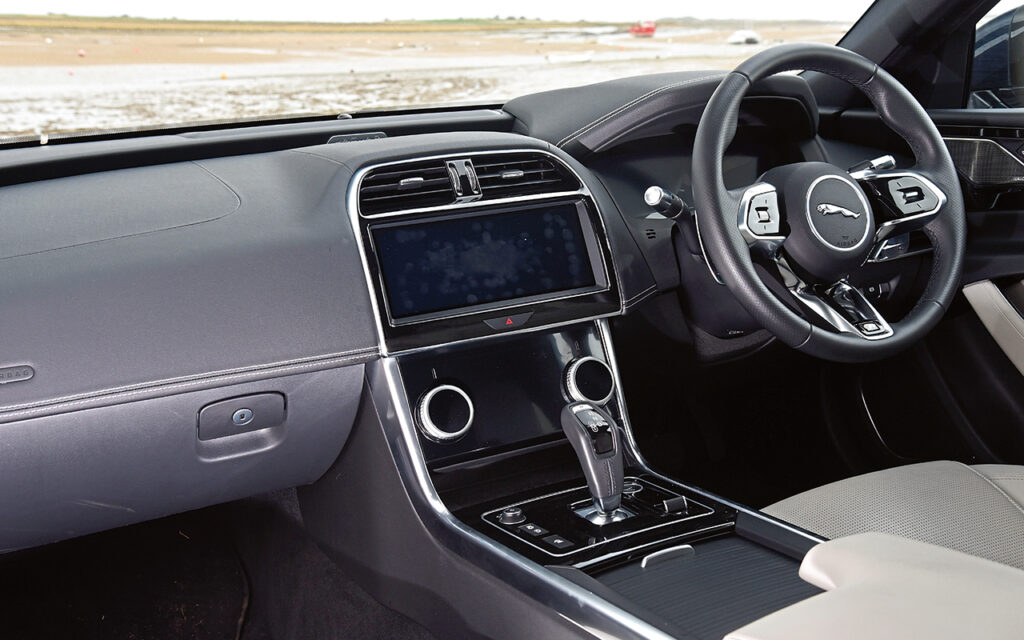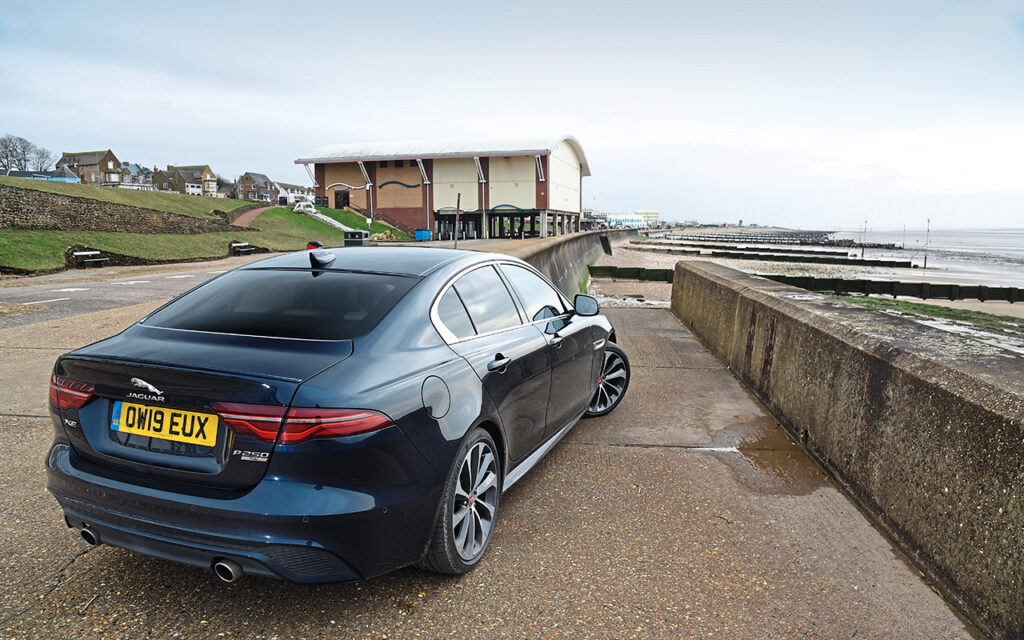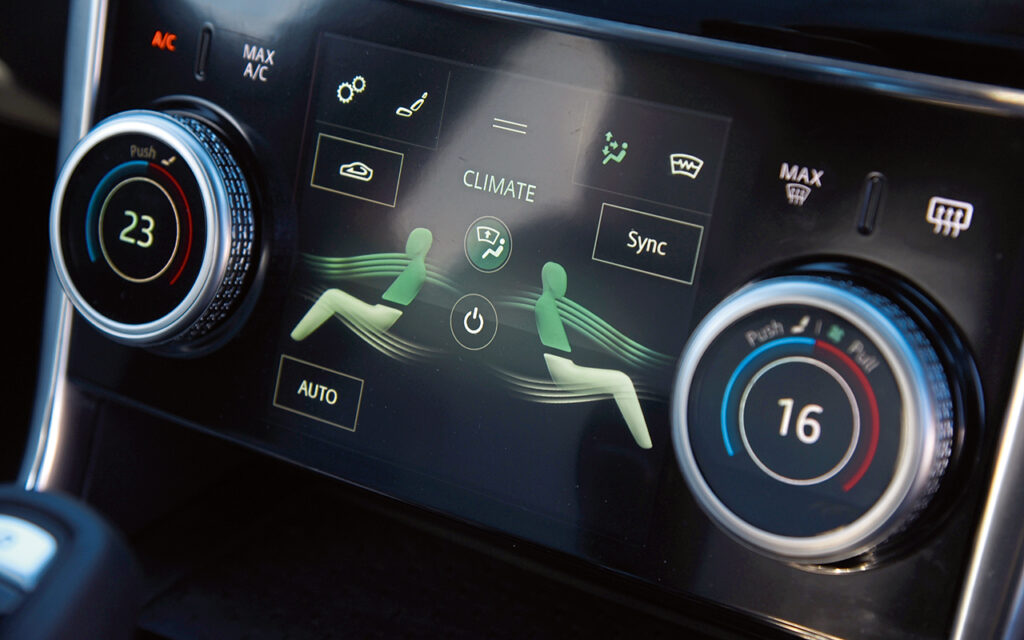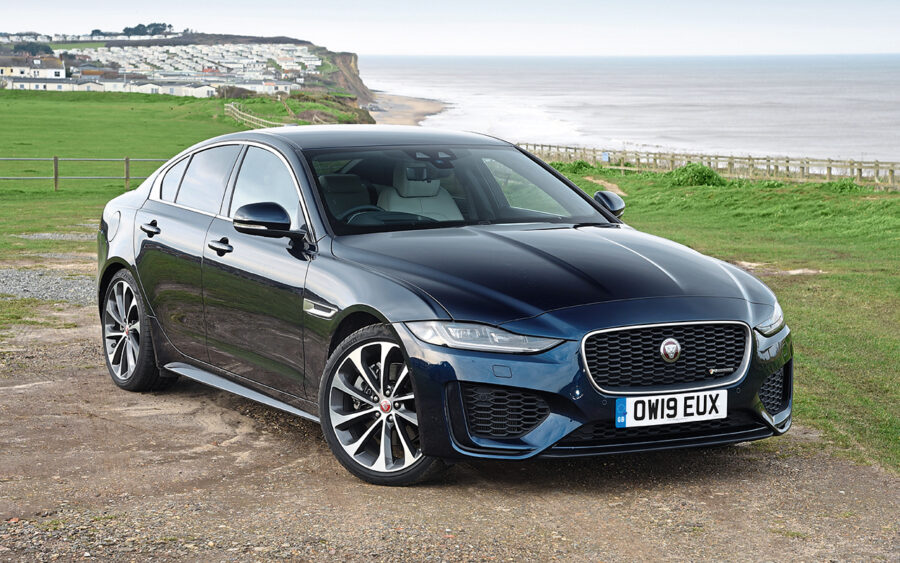The saloon may have fallen out of favour as buyers flock to SUVs – but the Jaguar XE is still ably flying the three-box flag
Words: Paul Walton
In 1970, fast food was a sandwich, a mobile phone was one on a longer cord, and social media was reading a newspaper with friends; only farmers drove 4x4s, just the rich went abroad for their holidays, and the majority of the population travelled to the British seaside in their traditional three-box saloon. Much has changed in the intervening five decades. Off-roaders (now called sports utility vehicles – SUVs) have since become the UK’s best-selling style of car and overseas travel has overtaken staying at home as our preferred holiday.
To discuss the future of the saloon, and if it even has one, I’m driving Jaguar’s latest offering along what was once one of the UK’s favourite vacation hotspots, the Norfolk coast.
My starting point is the jewel of the Anglian coast, Great Yarmouth. The town first began to attract visitors following the publication of Seawater – The Universal Cure in the 1750s by Dr Richard Russell, but it was the introduction of the railways in the 1840s and 1850s that really propelled Great Yarmouth into the realms of mass tourism. Charles Dickens used the town as a key location in his 1849 novel David Copperfield, describing it as, “The finest place in the universe.” In the early 1900s through to the Forties, Great Yarmouth developed its seafront infrastructure to become much of the resort we know today.
With its beautiful sandy beaches, many amenities (including two piers – Wellington, which opened in 1854, and Britannia four years later) and gorgeous surrounding scenery, by the mid 20th century Yarmouth was booming. Visitor numbers peaked in the Seventies at nine million tourist nights. Numbers started to dwindle with the birth of the affordable package holiday to Spain, dropping down to seven million by the start of the Nineties and five million by the millennium. Today, with so many alternatives both home and abroad, Great Yarmouth attracts a higher proportion of day visitors (74 percent) than staying visitors (26 percent), and in 2019 UK residents took a total of 72.6 million trips overseas.
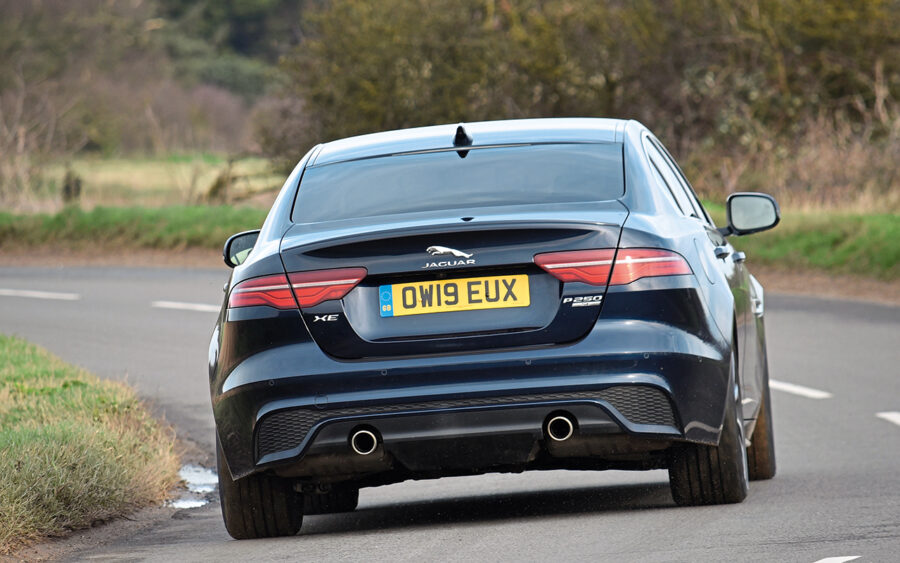
As a result, although the beautiful beaches remain, the town has developed a slightly faded appearance, with its architecture, entertainment and many of its signs stuck in a Seventies time warp. Only the Hippodrome – built in 1903, and where Houdini and Chaplin once wowed the crowds, before it became the UK’s sole full-time circus – plus the beautiful, but semi-derelict, Winter Gardens glass house (moved here from Torquay in 1904) remain as ghostly reminders of the town’s former glory.
The millions that visited Great Yarmouth during the Seventies no doubt travelled here in Ford Cortinas (the UK’s best-selling car throughout the Seventies), Ford Escorts, Morris Marinas, Vauxhall Vivas, Hillman Avengers and perhaps an XJ6. The MPV was a thing of the future and the few 4x4s on the market (mainly the Land Rover, Range Rover and Toyota Land Cruiser) were only used by those in the agricultural industry. For most people, the saloon was the main stay. Indeed, it held top spot as the UK’s favourite car from the Fifties until the 2000s, when we saw the rise of foreign holidays and SUVs. In 2019, SUVs made up 38.3 percent of European car sales (up 12 percent on 2018) with mid-size saloons, such as the XE, reduced to a mere 6.7 percent (Source: JATO).
But, just as Great Yarmouth still has much going for it, if this XE P250 SE R-Dynamic is anything to go by so does the old-fashioned, three-box saloon. It helps that this particular example is a good-looking one.
The XE has always had perfect proportions, and its 2019 facelift tidied up the front and rear ends to improve its looks further. Unlike its predecessor the X-Type (which, like Great Yarmouth, was too stuck in the past for the 21st century), the XE is a new design for a new breed of younger Jaguar buyer.
For me, the Portofino Blue (a £500 option) and gloss black 19in Style 5031 alloy wheels (another £900) are a perfect combination and as I drive down Yarmouth’s Golden Mile, passing the Wellington and Britannia Piers and many brightly lit amusements, it turns plenty of heads.
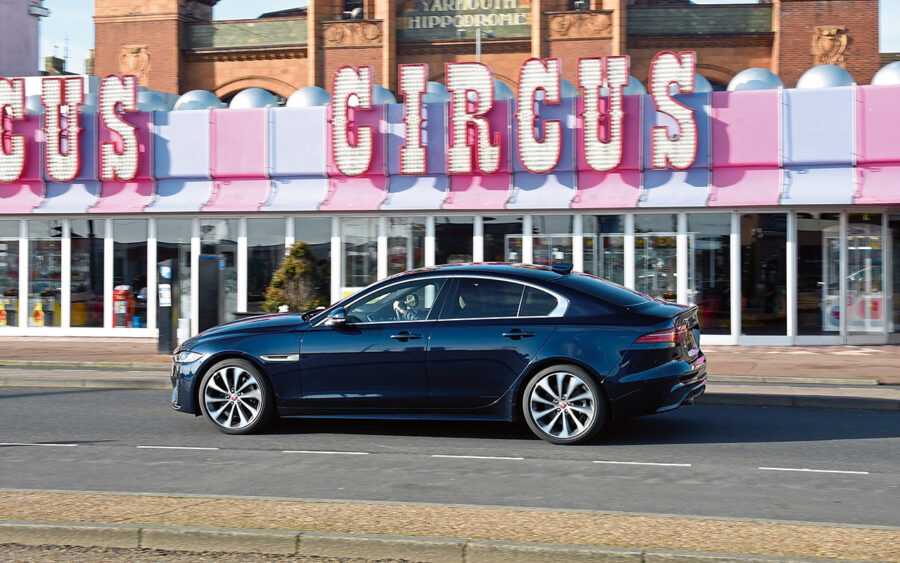
To understand how the saloon lost ground to the SUV, I’m driving the XE P250 from Yarmouth along one of the UK’s once popular holiday destinations, the East Anglian coast, to another once-popular seaside resort nearly 70 miles away, Hunstanton.
A few miles after leaving Yarmouth, I reach California. No, I haven’t taken the mother of all wrong turns, this tiny beachside resorts owes its name to the discovery of some 16th century gold coins on the beach around the same time as the 1848 Californian gold rush. Here, an enormous holiday park – California Sands – populated with post-modernist concrete chalets of the late Sixties dates back to the height of its popularity. Like a set from the BBC sitcom Hi-de-Hi!, they offer an old-fashioned holiday experience, worlds away from a private, luxury villa in warmer climes. Still, close to the gorgeous, long, clean beach, I can understand California’s continuing appeal for many.
As I can for anyone who has bought an XE over any SUV. The 2019 facelift also improved the quality of the interior’s plastics and added the same digital ventilation controls as the I-Pace. It only takes a few miles for me to realise that this classy and good-looking interior is as well built as an XJ’s. It’s similarly luxurious, too. Even though it is Jaguar’s entry saloon, with 12-way electric front seats, Bluetooth connectivity, cruise control with speed limiter, lane keep assist and driver condition monitor, rear camera, traffic sign recognition and adaptive speed limiter it offers a better specification than the once top-of-range XJ Super V8 Portfolio that you’ve just read about.
The roads clear after Scratby and I’m able to put my foot down for the first time. This car has the 250PS (246.5bhp) version of Jaguar’s four-cylinder Ingenium engine and is surprisingly perky. The acceleration arrives the moment I squeeze the throttle, the eight-speed automatic ‘box dropping down a couple of gears to release more of the engine’s torque. Okay, it’s not the most refined petrol engine around, sounding clattery on idle, but when pushed hard power delivery is seamless and there’s a surprisingly fruity (yet not too intrusive) bark from the exhaust.
Body roll is controlled and the steering is fast and accurate. Using the steering wheel-mounted, aluminum, gear-shift paddles to control the 2.0-litre engine, I’m able to power confidently out of corners before putting the hammer down for a following straight. I’d even argue that this P250 is as quick on narrow roads such as these as the 600PS XE SV Project 8, for all its power. The ride is hard, though, and parts of these uneven Norfolk roads can be felt too sharply in the cabin, but it’s still one of the best-handling small saloons around today.
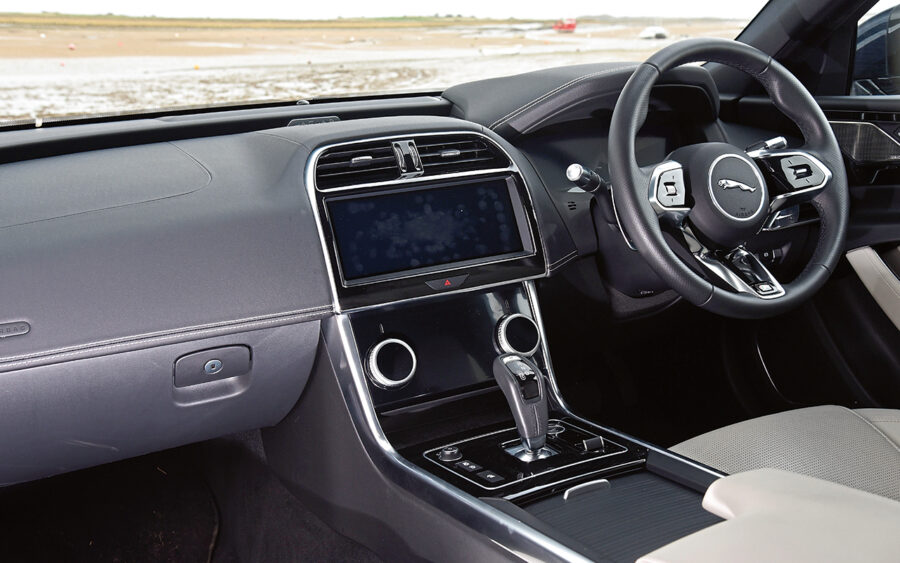
As I head further north I ponder on the declining sales of the XE. After selling 24,461 in Europe during 2016, that figure dropped to a paltry 7,978 last year. The answer is space. Although the front is roomy the rear is cramped, while the boot (at 290 litres) is especially tiny compared to an SUV. Plus, sitting low in a car with a high waistline (resulting in narrow windows), visibility is limited and I feel vulnerable, especially compared to sitting in even a small SUV, like the E-Pace, with its higher, more commanding view. In 2019, as XE sales reached a low point, 27,690 E-Paces were sold in Europe. And their carbon footprint is no larger than the XE’s.
At Helmsby, I pass another tell-tale sign of the area’s falling visitor numbers and more discerning customers: a disused holiday park. Formerly owned by Pontins, the holiday centre closed in 2009 for “significant investment,” while facing “declining bookings and escalating costs.” Overgrown and suffering from several subsequent fires, even in the bright winter sunlight it looks less inviting than a post-apocalyptic wasteland. Or Slough.
I take the A149 towards Cromer that weaves through the heart of the popular Norfolk Broads, a 120-mile network of navigable rivers and lakes. At Potter Heigham, there’s a vast marine sales centre with more styles of boat than the Dunkirk evacuation. As someone who gets seasick on a Channel ferry, I’d rather holiday in the disused Pontins. I might have a tree growing in my chalet, but it least it wouldn’t be moving up and down. Side to side. Up and down… I think I need a moment.
After passing through the sleepy villages of North Walsham and Thorpe Market, I eventually reach Cromer on the North Norfolk coast. With several high-brow artisan shops, the streets feel more prosperous than Yarmouth’s, with their doughnut stalls on every corner. I don’t stop to browse, though – I have little need for anything made from wicker.
I leave Cromer via the narrow coastal road that passes through Norfolk’s beautiful, barren saltmarshes. Famed for the teeming birdlife, I again don’t stop. My aviary knowledge starts and stops with ‘pigeon’. Besides, with its fast corners and long straights, this road is much more fun than squinting through a pair of binoculars. While the XE understandably can’t compete with the interior space of the E-Pace that I drove around Ireland’s Ring of Kerry, it definitely handles better than the SUV, which occasionally suffered from an abundance of body roll if pushed too hard.
My main issue with the XE has always been its width, which becomes more apparent on these narrow coastal roads. It uses the same chassis as the XF and F-Pace, which means it’s very wide for an entry saloon. At 1.85m, it is 15cm wider than the X-Type, the extra girth losing the perceived nimbleness of its forebear. And, despite there being plenty of aluminium in its construction, at 1,611kg the XE is still heavy for a compact saloon, and I’m aware of that bulk through the corners.
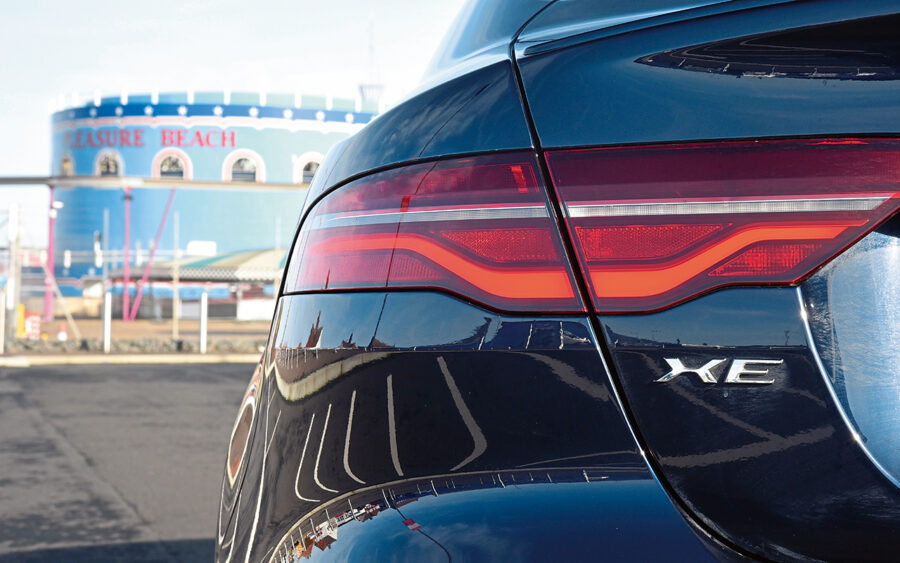
The road then passes through pretty Wells-next-the-Sea, a small port famous for two things: a granary with an overhanging gantry on the quay, and for not having the word ‘to’ in its name, even though it badly needs one.
The stunning scenery continues into the Holkham National Nature Reserve. At 9,600 acres, it’s England’s largest national nature reserve and comprises a wide range of bird habitats, including grazing marsh, woodland, salt marsh, sand dunes and foreshore. No sign of my natural habitat, though (Starbucks). Unsurprisingly, the villages are picture postcard beautiful, including Burnham Overy, a town that straddles the River Burn and was, until the Middle Ages, the port for the surrounding settlements.
I arrive in Hunstanton by early afternoon. Its centre is dominated by a large green, while the plethora of amusement arcades and beach shops offer the same old-fashioned entertainment and atmosphere as Yarmouth. It’s still popular with day trippers, but it, too, has felt the loss of visitors over the past half a decade.
Thanks to the XE’s many abilities, it’s been an enjoyable journey. Yet, would I buy one? Probably not, even though, at £36,975, the XE P250 SE R-Dynamic is £5k cheaper than an equivalent E-Pace with the same 250PS engine and SE R-Dynamic specification (we’ll gloss over the fact that, with extras, this particular XE is a whopping £42,965…).
Paralleling our changing holidaying habits, we also want more from our cars. They need to be the motoring equivalent of a Swiss Army Knife, able to do more than just carry four passengers in relative comfort with their modest luggage. Today’s popular vehicle has developed to fit in with our exciting sports and leisure lifestyles, leaving the saloon behind.
I know the beach-holiday charm of Yarmouth and Hunstanton may be old fashioned, but it’s still appealing and will never go out of fashion, but that’s not something I can confidently say about compact saloons, the XE especially. With ever decreasing sales, the continuing success of the Pace family, plus the company’s 2019 commitment to produce further electric vehicles, I can’t imagine Jaguar will continue with saloons indefinitely. And, when that happens, it will be as big a transformation as the rise of foreign holidays over the familiar.
